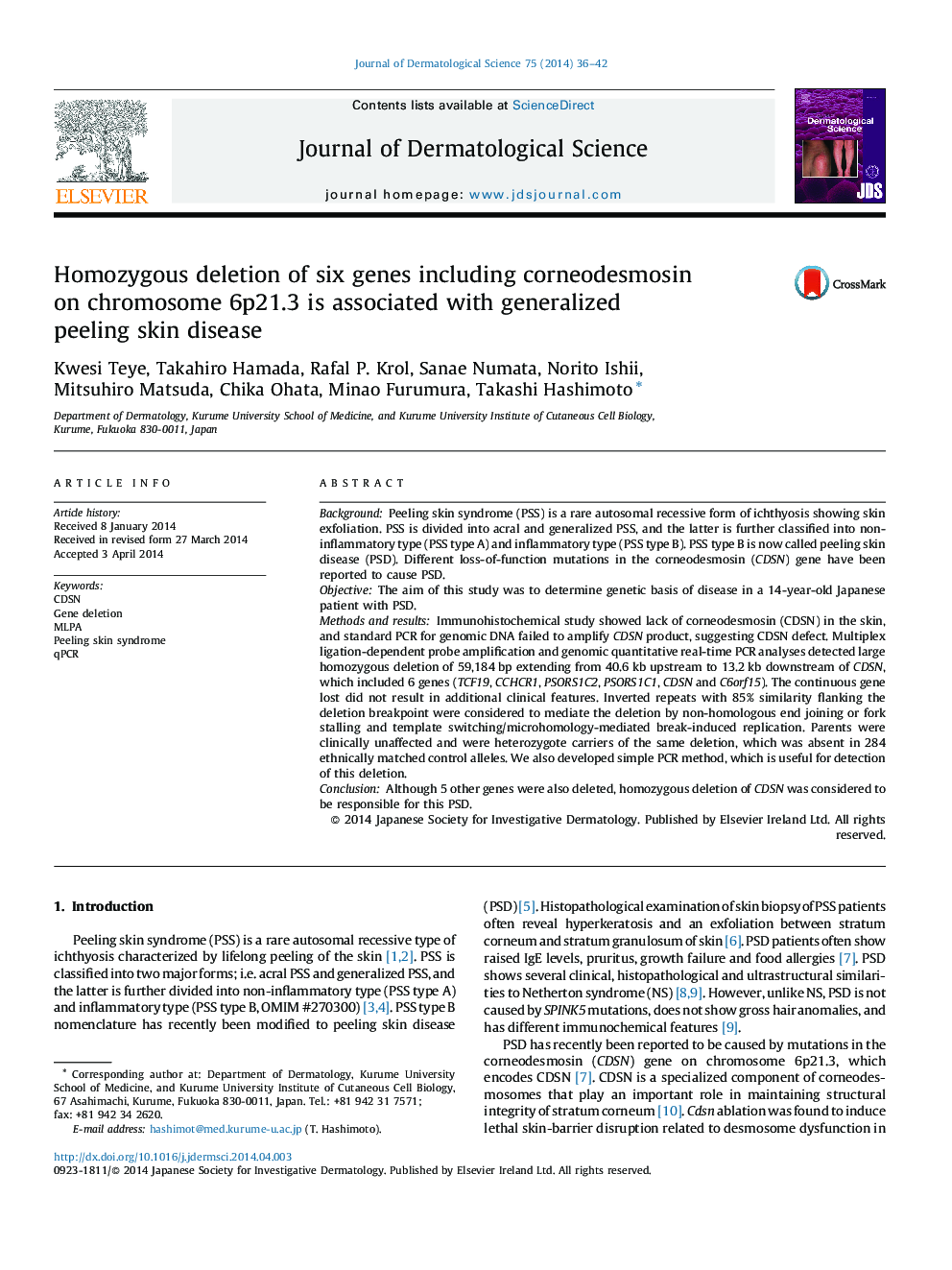| Article ID | Journal | Published Year | Pages | File Type |
|---|---|---|---|---|
| 3212750 | Journal of Dermatological Science | 2014 | 7 Pages |
BackgroundPeeling skin syndrome (PSS) is a rare autosomal recessive form of ichthyosis showing skin exfoliation. PSS is divided into acral and generalized PSS, and the latter is further classified into non-inflammatory type (PSS type A) and inflammatory type (PSS type B). PSS type B is now called peeling skin disease (PSD). Different loss-of-function mutations in the corneodesmosin (CDSN) gene have been reported to cause PSD.ObjectiveThe aim of this study was to determine genetic basis of disease in a 14-year-old Japanese patient with PSD.Methods and resultsImmunohistochemical study showed lack of corneodesmosin (CDSN) in the skin, and standard PCR for genomic DNA failed to amplify CDSN product, suggesting CDSN defect. Multiplex ligation-dependent probe amplification and genomic quantitative real-time PCR analyses detected large homozygous deletion of 59,184 bp extending from 40.6 kb upstream to 13.2 kb downstream of CDSN, which included 6 genes (TCF19, CCHCR1, PSORS1C2, PSORS1C1, CDSN and C6orf15). The continuous gene lost did not result in additional clinical features. Inverted repeats with 85% similarity flanking the deletion breakpoint were considered to mediate the deletion by non-homologous end joining or fork stalling and template switching/microhomology-mediated break-induced replication. Parents were clinically unaffected and were heterozygote carriers of the same deletion, which was absent in 284 ethnically matched control alleles. We also developed simple PCR method, which is useful for detection of this deletion.ConclusionAlthough 5 other genes were also deleted, homozygous deletion of CDSN was considered to be responsible for this PSD.
